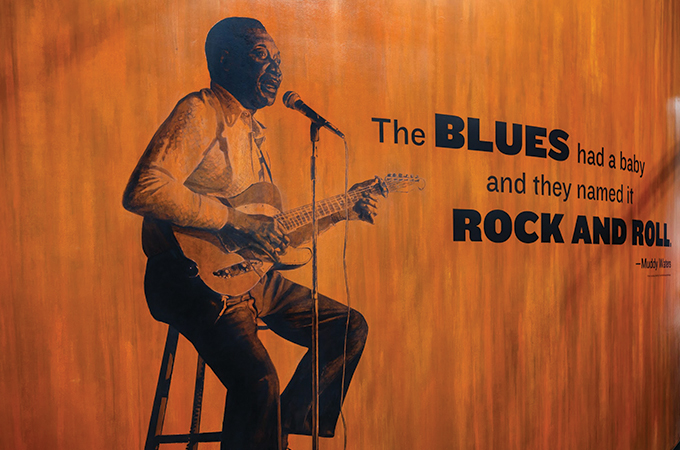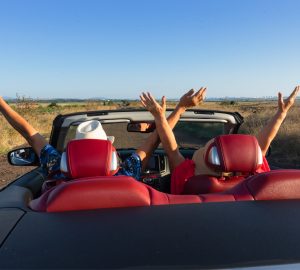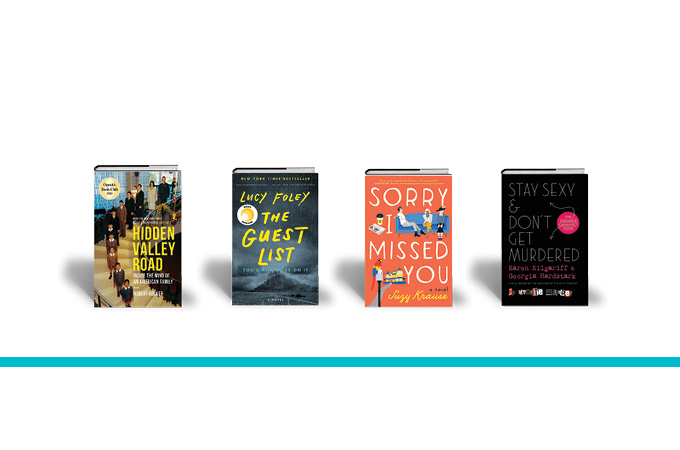The Mississippi Delta may be the ‘home of the blues,’ but St. Louis has plenty of reasons to lay claim to the distinctly American art form, too. Many blues greats have connections here, and St. Louis has long been a stop on the blues circuit. Now, we are even more ensconced as a blues capital with the new National Blues Museum, a project that sprung from the same kind of fervor and soul as the music it honors.
Executive director Dion Brown’s excitement about the new attraction and what it will bring to the community is palpable. The 23,000-square-foot site downtown in the MX District not only serves as a physical space to explore the blues and its storied past, but also acts as an educational tool through performances, lectures, films and programs. The museum’s grand opening was April 2, and Brown tells T&S what the public can expect when they visit.
T&S | What is your career background and connection to blues music?
Dion Brown | I retired from the Air Force after 21 years. My undergrad degree was in human resources, and after a few different jobs, I was recruited as executive director of the B.B. King Museum and Delta Interpretive Center. I wasn’t really into blues at the time, but they needed my help with operational issues. I needed to start in Mississippi to understand the blues. Being where the blues was born, working for the king of blues for five years, and meeting so many musicians and hearing their stories all prepared me for my current position.
T&S | How did you become involved with this project?
DB | The idea originated in 2010. Dave Beardsley, a co-founder of this museum, heard what I was doing at B.B.’s and contacted me; I’ve watched it develop since 2011. At first, the founders were just looking at storefront property. But they were encouraged to ‘go big’ so as not to do a disservice to the museum. There were constant fundraising efforts, and the biggest plug came in November 2014 when Lumière Place donated $6 million. That really opened the door. I wasn’t looking to leave B.B.’s, but I was asked to come take a look at the museum, and I fell in love! I started my role June 1.
T&S | What will the museum offer the community?
DB | What I really love is that it combines artifacts and interactive exhibits, so it appeals to all age groups. The interactive proponent will grab the younger generation and offer an informal education to teach them the history of the blues. For example, one exhibit teaches you how to write a blues riff. Then, you can add a harmonica, piano or guitar track and create an album cover to email to yourself. Along with these permanent exhibits, we have a 2,500-square-foot space for traveling exhibits that are free with admission, so it’s always a different experience. Our first one is Blues @ Home: Mississippi’s Living Blues Legends. (The interactive portrait series by H.C. Porter includes 31 paintings paired with oral histories of each subject and will run through June 1.)
T&S | Any favorite pieces?
DB | A local musician donated more than 900 harmonicas he played, and we have them on display. It’s a great place for people to stop and talk. We also want to capture oral history as well. Visitors can stand in front of cameras and talk about their connection to the blues, and there are 12 monitors in the performance area that will serve as an ongoing collage of these stories. I love watching those.
T&S | What else will the performance area be used for?
DB | I am floored by this space. It’s modern but still has a ‘blues’ look. We will be able to showcase local talent, as well as hopefully become a mecca for national and international artists. It seats 180, but we probably won’t put more than 150 in there so everyone can be comfortable. My vision and mission is to keep the blues alive! I am really impressed with the four young teenagers that make up the blues rock band Phi, who just performed as our opening act at an event at Ballpark Village. When you have kids that young with a passion for the blues, you have to put them in front of people. Every January, Memphis hosts the International Blues Challenge, and my plan is to bring the same international acts here while they’re so close.
T&S | Why is it appropriate this museum is here in St. Louis?
DB | The blues were born in the Mississippi Delta, but St. Louis is right in the heart of the greater blues area, which includes cities like Chicago and Memphis. It’s within hours of all these places, which makes it centrally located and truly the best spot for it. The downtown location is perfect since it’s within walking distance to the city’s other major attractions, like Busch Stadium and the Arch.
T&S | Will there always be some sort of St. Louis connection present?
DB | It’s a fine line because it’s a national museum, but we want to respect St. Louis in it all. There is a small room that will always feature something with a local connection. On opening day, it was dedicated to St. Louis’ role in blues history, and in the future, we hope to feature local artists who have pieces connected to the blues.
General admission to the National Blues Museum is $15. Visit nationalbluesmuseum.org for hours and more information.
Photo: V Three Studio








